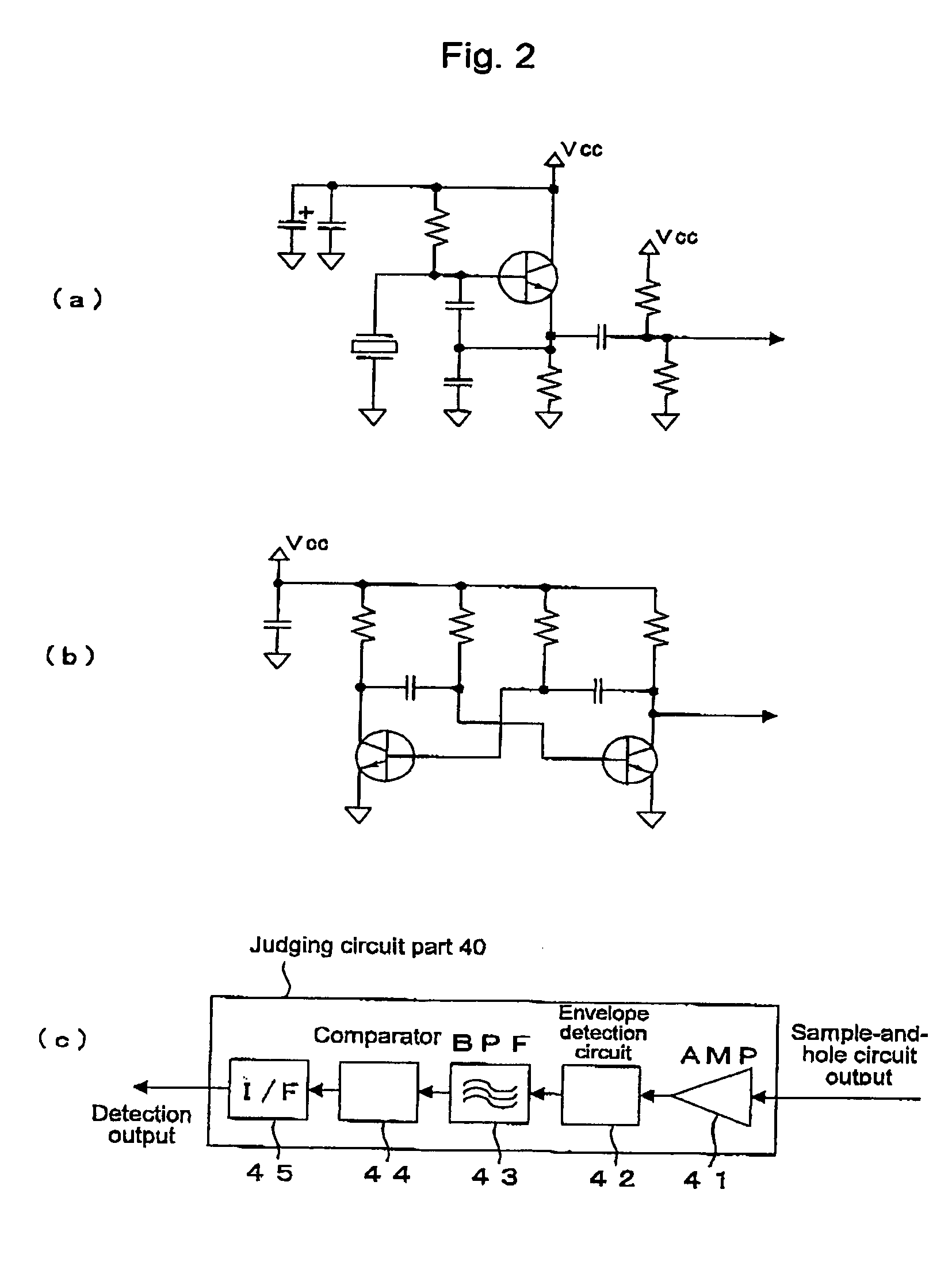Object sensor and controller
a technology applied in the field of object sensor and controller, can solve the problems of difficult to obtain sufficient response, inability to detect the hand of the user, and inability to provide etc., and achieve the effect of high response, high reliability and sufficient convenience of the system
- Summary
- Abstract
- Description
- Claims
- Application Information
AI Technical Summary
Benefits of technology
Problems solved by technology
Method used
Image
Examples
first embodiment
[0045]A first embodiment of the present invention is described. According to this embodiment, the present invention is applied to a controller of a passive entry system of a vehicle (or a tire pneumatic malfunction warning system). As shown in FIG. 1(a), this system comprises a portable machine 10, a body machine 20 and an object sensor 30 which are mounted on the vehicle.
[0046]The portable machine 10 comprises an antenna or a receiving circuit for receiving a seizing signal in a low frequency (LF) such as 100 to 150 kHz, a transmitting circuit or an antenna for wirelessly transmitting an answer signal or a manipulation signal (a locking manipulation signal or an unlocking manipulation signal) in a high frequency (a frequency in UHF band, for example) as will be described below, storing means (EEPROM, for example) on the portable machine side for storing at least a certification code (referred to as ID code also), a control circuit comprising a microcomputer for controlling the whol...
second embodiment
[0103]Next, a second embodiment is described with reference to FIGS. 10 and 11. According to this embodiment, the present invention is applied to a controller in a passive entry system of a building (residence or an office, for example) FIGS. 10(a) and 11(a) are front views of a door of the building, FIGS. 10(b) and 11(b) are sectional views of the door and FIG. 11(c) is an enlarged front view of the door. The same components as in the first embodiment are allotted to the same reference numerals and descriptions of them are omitted.
[0104]The circuit constitution and its processing contents may be the same as in the first embodiment shown in FIGS. 1 to 4. Arrangement of each component may be as follows, for example.
[0105]In a case of a bar-shaped door handle as shown in FIG. 10(a), a transmission antenna 32 and a receiving antenna 33 of an object sensor 30 are formed to a simple bar shape so as to correspond to the door handle and each component is arranged as shown in FIG. 10(b). Th...
PUM
 Login to View More
Login to View More Abstract
Description
Claims
Application Information
 Login to View More
Login to View More - R&D
- Intellectual Property
- Life Sciences
- Materials
- Tech Scout
- Unparalleled Data Quality
- Higher Quality Content
- 60% Fewer Hallucinations
Browse by: Latest US Patents, China's latest patents, Technical Efficacy Thesaurus, Application Domain, Technology Topic, Popular Technical Reports.
© 2025 PatSnap. All rights reserved.Legal|Privacy policy|Modern Slavery Act Transparency Statement|Sitemap|About US| Contact US: help@patsnap.com



